Southern Spain, September 2008
I've been to Spain numerous times and seen some good birds but normally in the company of non-birders so this was a much anticipated birding trip. I went with Tim and Janet Davie, and John Wright. We travelled by Easyjet from Liverpool to Malaga and stayed at Meson de Sancho, which lies on the main road between Algeciras and Tarifa.Although the main purpose of the trip was to observe the spectacle of raptor migration, there is wide range of wonderful habitats, mostly within an hour of Tarifa that we managed some excellent general birding during the week.
I find it a pain embedding photo's in the blog so I'm experimenting with picassa web albums. I've uploaded the photos from the trip to picassa and embedded a slideshow here.To view the slideshow in full size click here
Alternatively to see pictures in a gallery, click here.
Day One
The first birds of the trip were a couple of parakeets that flashed over the road in front of the car on the way from the airport. We first thought these were ring-necked but later decided they were more likely to be monk, due to the number of monk parakeets that we later saw near Malaga and the fact that we didn't see any other ring-necked during the week. The most notable event of the trip from the airport was a forest fire in the hills to the east of Tarifa, quite close to where we were staying. Flocks of cattle egrets flying into their roost with the smoke and flames raging in the background made for quite a impressive sight. Later we observed several pallid swift and about 40 bee-eaters over the hills to the south of the hotel before darkness fell.
Ruppëll's vulture
Day Two
With much anticipation we headed off for the migration watch-points that are stationed strategically along the coast around Tarifa, but not before ticking the first griffon vultures and alpine swifts of the week outside the hotel. The first main stop of the day was Calzada watch-point where raptor migration was much in evidence. This established viewpoint is easily accessed of the Tarifa road and overlooks the nearby hills that are coated in wind turbines, which must surely be a major hazard to the birds. On our arrival visible migration was in full swing with a steady stream of booted eagles, honey buzzards and short-toed eagles passing overhead at close range (later in the week the birds seemed to pass over much higher). Several flocks of alpine swift passed by along with a few black kite and bee-eaters two red-rumped swallows, a common swift and 20 spotless starling.
Next stop was Barbate estuary where we connected with 30 black kites and an osprey along with a few waders and gulls. The adjacent Barbate salt marsh was proved productive with 25 Kentish plover amongst a more familiar cast of dunlin, greenshank, redshank, turnstone, common sandpiper, sanderling and whimbrel. Four little and 15 sandwich contributed the first terns of the week.
After a leisurely lunch we headed inland to La Janda, a flat cultivated plain to the west of Tarifa and a real birding gem. Immediately upon arrival quality birds were apparent. The pick of the bunch were montagu's harriers with up to 4 juveniles, a male and a female putting in an appearance over the rice paddies although two distant black-shouldered kites vied for top billing . Up to four marsh harriers were also seen along with 150+ glossy ibis, 87 white stork, 15 collard pratincole, 1 night heron and 1 squacco heron.
Day Three
An early morning start saw us make a pre-dawn departure for Bolonia estuary where white-rumped swifts were known to come down to drink at daybreak. The fetid green swamp we encountered on arrival was not an encouraging sign and during a fruitless wait no swifts appeared. However 20 audouin's and 20 yellow-legged gulls were on the beach and a few Cory's (presumed scopolis) and one Balearic shearwater were offshore.
Mid morning we headed off to La Janda again but this time approached it from the eastern end and worked westwards towards where we started the previous day. The first stop produced a rufous bush chat and an olivaceous warbler (missed by me!) as well as a good selection of other passerines. Another four sightings of monty's were had as well as a common buzzard. The journey back towards Tarifa produced the first Hoopoe of the trip.
We headed back to the watch-point at Trafico for some more raptor migration. Less birds were coming through but these still included several booted and short-toed eagles, one honey buzzard, 83 white stork, four black stork, four black kite, four alpine swift and 40 bee-eater. We finished the day a short distance away at Playa de los Lances – Tarifa beech – where we picked up another eight Hoopoe, two roller, several short-toed lark, three juvenile woodchat shrike and two tawny pipits along with the pleasingly abundant corn buntings (not like home!).
Day 4
First stop was the Los Alcornocales migration visitors centre a short way up the road from the hotel in the Al Jazeeras direction. In the woods surrounding the visitors centre were five firecrest, six hawfinch and one short-toed treecreeper. Crested tit was heard but not seen. It was starting to warm up and we noticed raptors were passing overhead so we headed the short distance to El Algorrobo watch-point literally "across the road". It was 10am and we were just about to be treated to a honey buzzard bonanza as at least 91 passed over in several groups. A supporting cast of other migrants kept things interesting and few passerines were added to the trip list including serin and redstart.
After about an hour here we headed back up to our favoured watch-point at Calzada and at 12:30 were rewarded with first one and forty minutes later another ruppëlls vulture. With a totally different pattern of pale markings on the underwing coverts and darker coloration overall these were not difficult to separate from the many Griffons that were in the area. We later saw the ruppëll's on the ground at a carcass with about 100 griffons and an egyptian vulture. The ruppëll's is easy to pick out in the picture below (because it's circled in red!) as it's darker than the griffons which have the bicoloured dark flight feathers with a sandy brown back. Once again there were plenty of other raptors passing through as well as one of two swallowtail butterflies seen during the week.
We spent the early evening back at La Janda where the usual marsh and montagu's harriers were observed as well as four collard pratincole, several flocks of glossy ibis, and several white stork.
Day Five
A change of tack today as we headed inland to Laguna de Medina to look for white-headed duck. What a pleasingly location it proved to be with several white-headed duck in evidence as well as red-crested pochard, black-necked grebe, black-winged stilt, spoonbill, purple heron, greater flamingo, black tern, whiskered tern and good selection of other wetland birds. In the fields surrounding the laguna were up to 50 Stone-curlew and a black-shouldered kite.
After lunch we headed for Algaida woods, an area of coastal pine woods on the fringes of Coto Doňana . A Bonelli's warbler, and elusive golden oriole were the main highlights. The ground was covered in tiny hair like spines from some of the vegetation which stuck into your feet and made walking around the woods a very uncomfortable experience. This was also probably the hottest and driest location we'd been in and we were plagued with flies while walking around. On the whole I we were glad to move on.
We started heading back along the coast towards Tarifa and stop of at the wonderfully named Bonanza salt-pans. A good selection of waders were present on the pans including black-winged stilt, redshank, avocet, ruff, common sandpipier, dunlin, knot, greenshank, little stint, curlew sandpiper, black tailed godwit and greater flamingo (over 1000). A lesser-short toed lark put in a brief appearance and the first slender-billed gulls were noted. The highlight for me however was the small water tank no more than about 50 metres square that had five tern species all within one view simultaneously – these being whiskered, common, black, little and sandwich.
Day 6
An early morning visit to Playa de los Lances produced a few Kentish plover, 12 night heron, 150 calandara lark, six short-toed lark, two wheatear and 40 bee-eater. We then tried a new spot on the coast, Zahara lighthouse for a brief spell of sea-watching combined with raptor migration. A cory's shearwater, whiskered and sandwich tern were seen over the sea and overhead passed 60 honey buzzard and a male montagu's harrier. The first blue rock thrush of the week was also seen here.
Further up the coast again and another new site – Barbate pine woods. Most notably birds here were a Dartford warbler and a chiff-chaff with an unusual call that we had down as Iberian at first but after some post trip research by JW was put down as a regular P. collybitta.
Heading back east towards Tarifa we called in a La Janda where we were greeted with great views of 10+ collard pratincolea along with five monty's and 4 marsh harrier, 150 glossy ibis, 100 white stork, and a squacco heron. There was also a significant movement of swallows during the hour we spent here with a steady southward stream of 500+ birds.
In the evening we followed up some local info that white-rumped swifts might still be using a know roost at Bolonia caves. It looks like we were about a week to late for them, but we were compensated with two very brief little swifts which appeared for about 10 seconds before entering the caves to roost.
Day 7
The morning found us back at Playa de lo Lances where a single Dotterel went over and a about 100 calandra lark put on a good display. Twenty honey buzzards were also seen including several birds on the beach.
By 12:30 we were back at Calzada watchpoint where in the next three hours we estimated that at least 10,000 birds passed over on their way across the straits of Gibraltar. A truly awesome experience. I could not keep an accurate count of each species but several thousand each of booted eagle and black kite went over and at least 250 honey buzzard in obviously ideal migration conditions.
We ended the day with another attempt for the white-rumped swift but had to settle for the admirable little swifts again. We were joined however by some amiable Polish birders who were delighted with the little swifts which put on a slightly longer show than the previous night.
Day 8
The final day started unsurprisingly at Calzada watch-point where another fine display of raptor migration was in evidence. Eventually and reluctantly we had to leave for Malaga. En-route we called in at Sierra Crestellina where JW was the only one of us to get good enough views of two rapidly departing Bonelli's eagles. We were some way in land here and about a hour east of the straights but there was still an impressive number of raptors, especially black kites, passing over.
The final stop of the trip was the Guadalahorce estuary very close to Malaga airport. An nice spot to round of the trip, it produced a noisy roost of monk parakeet, a southern grey shrike and osprey and a (presumed) red-necked nightjar along with a good selection of waders.
And so ended a fantastic week's birding in a very accessible location. Raptor migration easily ranks with any of the world's great wildlife spectacles and this week produced great memories that won't have faded that much before I'm back here again.
Click here or the image below to see the gallery of pictures from the trip
 |
| Tarifa |
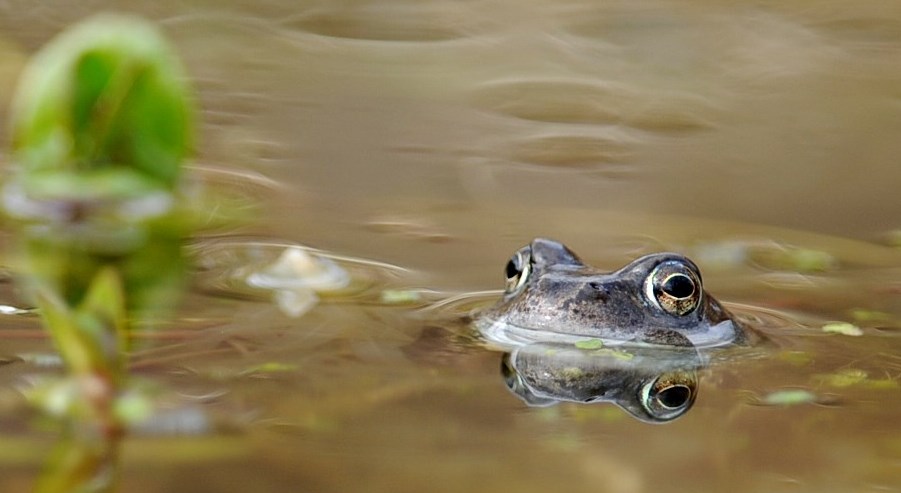




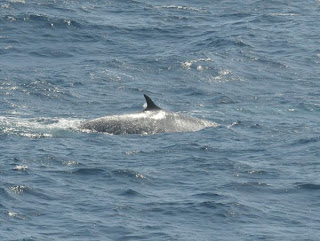




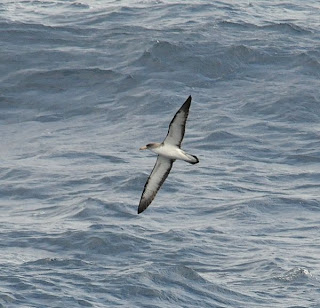





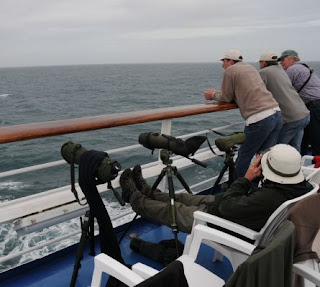
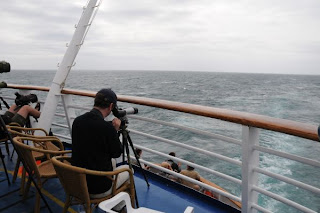



 I decided to check the two sites that I originally set out for, so I left. These produced no black grouse which somehow made finding the lek even more rewarding. I decided to return to the lek. When I got back it was about 05:30 and fully light, the bird song had receded and the black grouse were calling much less intensively. They were alternating between feeding and half-hearted displaying. It was now I realised that accidentally getting up an hour early meant that I was here much earlier than intended and witnessed the lek at its peak. In fact had I been running to my planned schedule I would probably have driven straight past this spot in favour of the original (grouseless) sites.
I decided to check the two sites that I originally set out for, so I left. These produced no black grouse which somehow made finding the lek even more rewarding. I decided to return to the lek. When I got back it was about 05:30 and fully light, the bird song had receded and the black grouse were calling much less intensively. They were alternating between feeding and half-hearted displaying. It was now I realised that accidentally getting up an hour early meant that I was here much earlier than intended and witnessed the lek at its peak. In fact had I been running to my planned schedule I would probably have driven straight past this spot in favour of the original (grouseless) sites.
 I scanned for female grouse but didn't see any. Hopefully breeding has already taken place earlier in the Spring and the females are brooding. Black Grouse in the north Pennines are a rare conservation success story and lekking males are on the increase. Hopefully one day they will be back in Lancashire but even then I think this place will see me visiting regularly every spring from now on.
I scanned for female grouse but didn't see any. Hopefully breeding has already taken place earlier in the Spring and the females are brooding. Black Grouse in the north Pennines are a rare conservation success story and lekking males are on the increase. Hopefully one day they will be back in Lancashire but even then I think this place will see me visiting regularly every spring from now on.











 This is probably the best buzzard photo I took on the trip. Many bird of prey portraits you see are of captive birds, but this was truly wild and was taken from about 5 metres distance from the underground hide.
This is probably the best buzzard photo I took on the trip. Many bird of prey portraits you see are of captive birds, but this was truly wild and was taken from about 5 metres distance from the underground hide. I love this long eared owl shot. It really takes me back to the day. The weather was clear and crisp and Janos our guide took us to a suburban roost which are apparently common in this part of europe. Janos estimated there were about 150 owls in the roost of which we counted about 90. It was such a weird sight seeing so many owls in roadside trees with passers-by walking a few feet beneath the birds. The owls seemed so unconcerned - so different to long eared owl sightings in the UK.
I love this long eared owl shot. It really takes me back to the day. The weather was clear and crisp and Janos our guide took us to a suburban roost which are apparently common in this part of europe. Janos estimated there were about 150 owls in the roost of which we counted about 90. It was such a weird sight seeing so many owls in roadside trees with passers-by walking a few feet beneath the birds. The owls seemed so unconcerned - so different to long eared owl sightings in the UK. We were supposed to be photographing white-tailed eagles, but despite many sightings during our visit, none decided to appear on the cat-fish that had been staked out in front of the hide, so we had to make do with Caspian gulls. Bill and John are gull aficionados and have started finding caspian gulls locally in recent years. They appreciated the time to study so many different plumaged caspians at such close quarters. It was a real learning experience for me too having not come across caspian gull in the UK and in some way made up for the lack of w-t eagles. To see what we should have been photographing take a look at Mike Watson's blog for December 2007!
We were supposed to be photographing white-tailed eagles, but despite many sightings during our visit, none decided to appear on the cat-fish that had been staked out in front of the hide, so we had to make do with Caspian gulls. Bill and John are gull aficionados and have started finding caspian gulls locally in recent years. They appreciated the time to study so many different plumaged caspians at such close quarters. It was a real learning experience for me too having not come across caspian gull in the UK and in some way made up for the lack of w-t eagles. To see what we should have been photographing take a look at Mike Watson's blog for December 2007!
